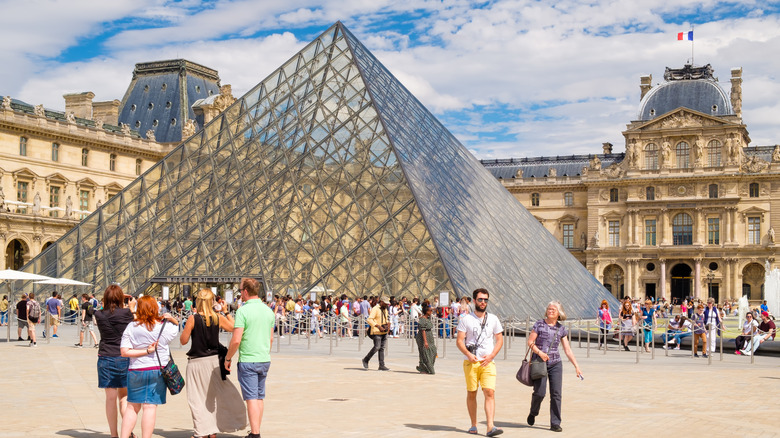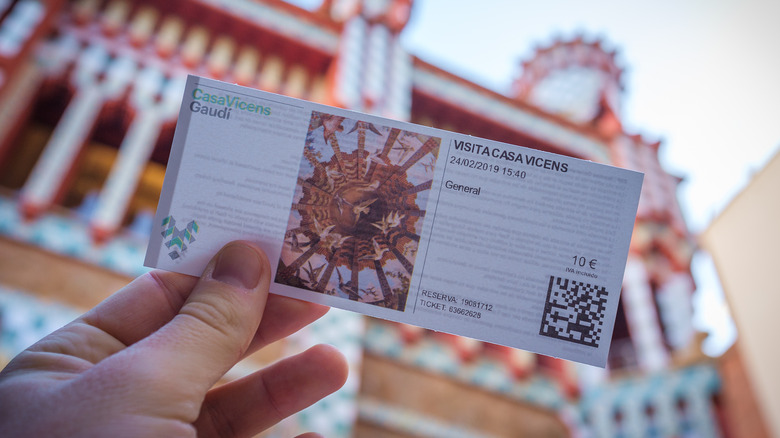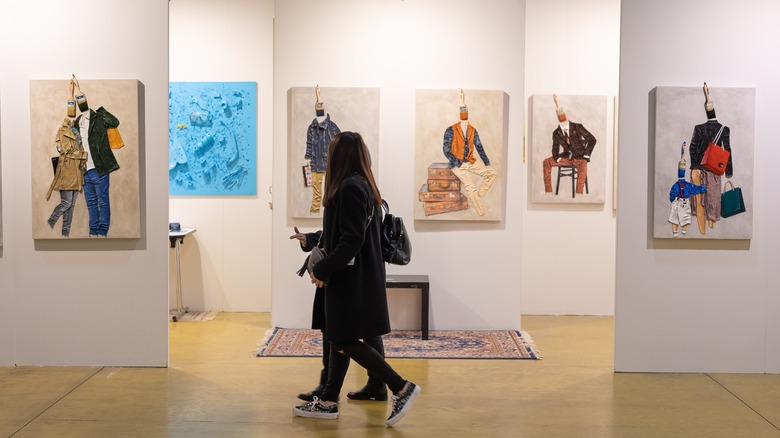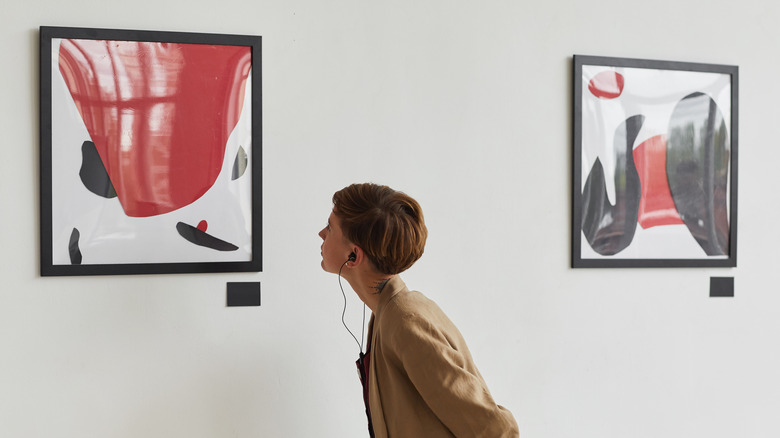How To Make The Most Out Of Your Next Trip To A Museum
When you visit a museum, you expect to enjoy the experience or at least leave having learned something new. But this can be a challenge, especially with big museums hosting many items on display. Instead of feeling inspired, transformed, or equipped with conversation starters, you end your museum visit feeling guilty or disappointed because you couldn't take in everything, despite that being difficult. If you succeed, you'll likely end up feeling unsatisfied because you were overwhelmed or experienced a case of museum fatigue (as Gareth Davey described in Museum Studies Today).
If you love going to museums but dislike the feeling of missing out on a big chunk of the exhibits, then you might have this museum thing wrong. To make the most out of your museum visit, art historian, curator, and founder of private curated tour company ArtMuse Natasha Schlesinger explained to The New York Times, "You want to do the museum justice and have fun at the same time." Speaking with Domestika, museologist and lecturer of museum studies and art history Maria Lightowler expounds further, "We should come out of an exhibition a different person than when we entered it and feel that the experience has provoked some questions." In line with these goals, here are some tips to make your next museum visit worth it.
Plan and prepare for your museum visit
Lightowler and Julius Wiedemann, one of Domestika's chief curators, told the platform that preparation is key to having the best possible museum experience. Lightowler recommends browsing the museum's website before your visit for photographs of exhibits and to read commentaries and interviews from artists and curators. "Knowing what we are going to experience optimizes the learning process," Wiedemann explains, adding, "If we can familiarize ourselves with the era in which the artwork fits in, we can make connections with other fields, like literature or politics."
According to AARP, before purchasing your tickets online, you should check out if the museum offers free or discounted days. The site also advises researching days and times when the museum lower crowds. Or, if you can't schedule a less crowded day or time, AARP suggests looking for alternative entrances or consider going during the evening near closing time when there are fewer people.
Your overall museum visit strategy
Nick Gray, the founder of museum tour company Museum Hack, told The New York Times that on the day of your museum visit, you should walk the museum's layout for 10-30 minutes so you can understand the space. "Walk the space, understand where things are, what you might be interested to come back and see, and then, go to the cafe," he adds.
In addition, docent Anne Bonowitz encourages museum-goers to be selective, per AARP. In other words, focus on a gallery or area, or on the exhibits and artifacts that you're truly interested in. Schlesinger advises museum visitors (via The New York Times) to choose up to 20 artworks and spend five minutes focusing on each one. "Ideally, you should try to balance the intuitive visual impact of a piece and the effort to understand it," Lightowler told Domestika. What this means, Wiedemann shares with Domestika is to be guided by your first impression of an artwork and then try to understand the artwork's impact on your feelings.
What to do during your museum visit
During your visit, comfortable shoes are a must as are sweaters or light jackets, according to Steve Moyer, managing editor of Humanities magazine. And opt for an audio tour or private guide. An audio tour is typically free or comes with a small fee but you'll receive an extensive lesson on the artwork. "Their most significant advantage is that we get to hear the commentary from someone who has in-depth knowledge of the artwork and tells you about the world in which the work was created," Wiedemann tells Domestika. Guides are a good option, too, but Schlesinger warns they can be expensive. Her rate for a 90-minute tour for a group of up to five people is $400, per The New York Times. If there are docents, don't be afraid to ask questions, such as their recommended "can't-miss" item, per AARP.
Asking questions is important to steer you toward worthwhile items to check out, especially if you won't be there the whole day. Experts differ in the exact time you should spend in a museum, but all agree that there's no point in staying until museum fatigue sets in. "A common mistake people make is to stay at a museum too long to try to see as much as possible, but this will only result in sensory overload and leave you overwhelmed," Schlesinger told The New York Times. She suggests limiting your museum visit to between 90 minutes to two hours.
How to process your museum visit
Because a museum visit is supposed to inspire, transform, or help you start a conversation, some reflection time afterward is vital. You can do this at the museum cafe, at a park, or someplace else where you can think. "Always download over a glass of wine, a bite to eat, and good conversation. You want to savor the visual experience and compare notes," Lisa Hanover of the James A. Michener Art Museum told Humanities magazine. She adds, "[If] you visited solo, this still works! People-watch, think about the experience, peruse the books or pamphlets you got at the museum."
At the end of this reflection time, you want to be able to leave with one new thing, Laura Sillars, dean of the MIMA School of Art and Design at Teesside University, wrote in The Conversation. This could be a new fact or info about the artwork, its artist, the time period when it was created, or perhaps a souvenir from the museum gift shop. Or take home a memory of a painting, sculpture, or other artwork or artifact that moved you the most, suggests HuffPost, with the goal of continuing the discussion and learning at home. You'll know if your museum visit was worthwhile if you think about the artwork, relate it to your daily life, and discuss it with other people, Weidemann explains to Domestika.




